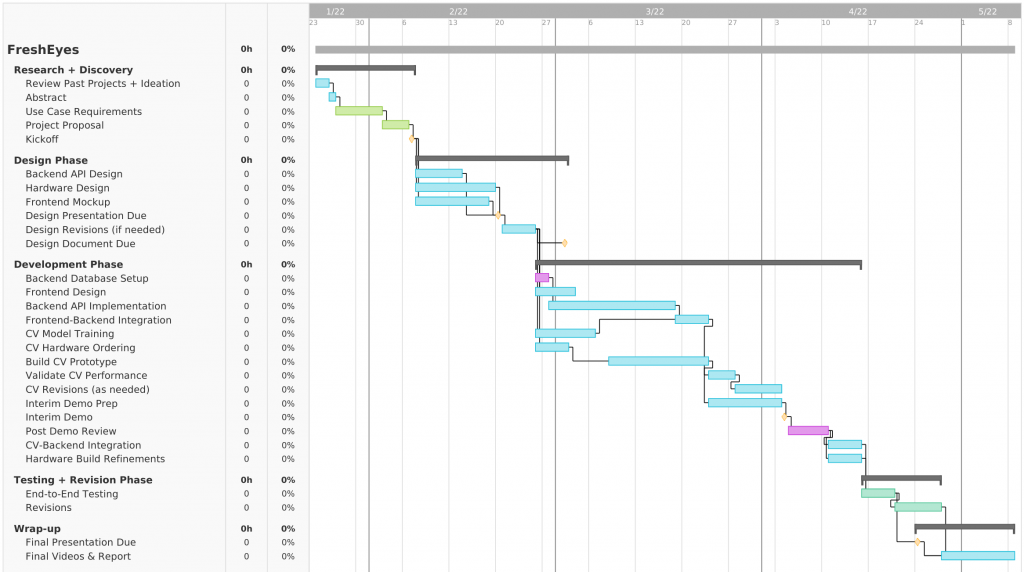This week, I focused on back-end architecture and API design, and also came up with our testing strategy, task distribution, as well as task schedule (Gantt Chart) to guide us in our journey ahead.
Before beginning any back-end development, it is of vital importance to plan out the details such as the technology stack used, database system, and the specifications for API endpoints. The entire system will consist of up to 4 discrete components including the back-end. Hence, coming up with an exhaustive list of API endpoints, their functionality, and their input and outputs is of vital importance not just in guiding the design of the API endpoints and the back-end architecture, but also guiding the technical direction of all the discrete components, serving as a sort of technical “glue”. It is much easier to come up with a definitive list of use cases and develop around that structure, than it is to add arbitrary use cases as they arise during development. The architecture I have developed is linked here. Together with the API, I have also been exploring technology stacks such as Node.js with Express and SQLite, and selecting the most appropriate technology stack that will serve our use case best, including factors such as scalability and ease of integration with our other system components.
I have also worked on the task schedule, including the task distribution. The Gantt Chart is a visual, “waterfall”, breakdown of our tasks as well as phases of development. It enables us to keep track of whether we are on schedule and any upcoming tasks, in every stage of our project. Currently, we are on schedule and I see no significant roadblocks in the immediate future – let’s hope this keeps up!


